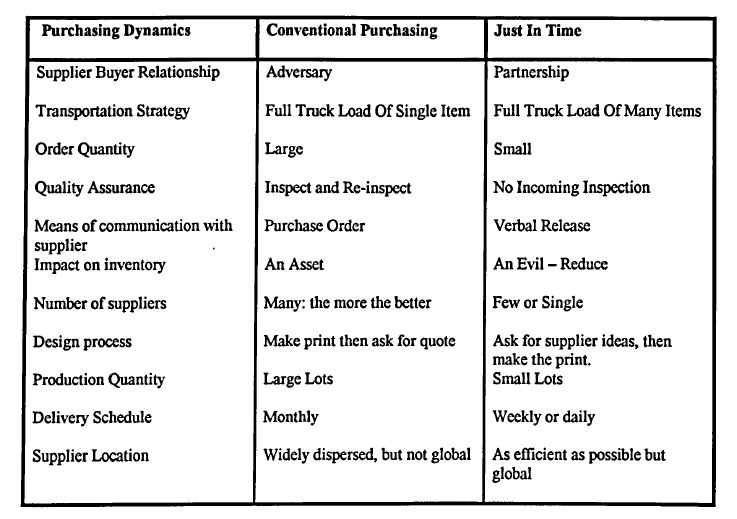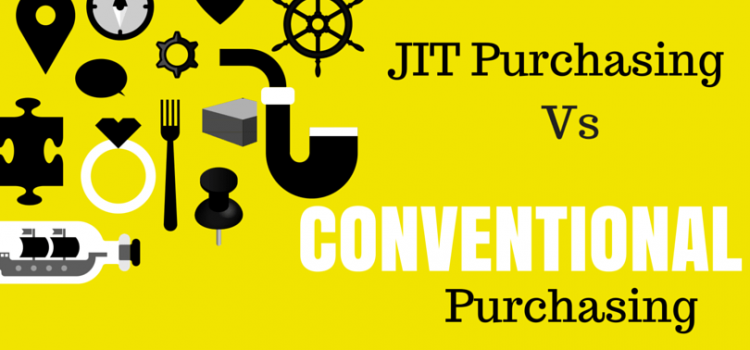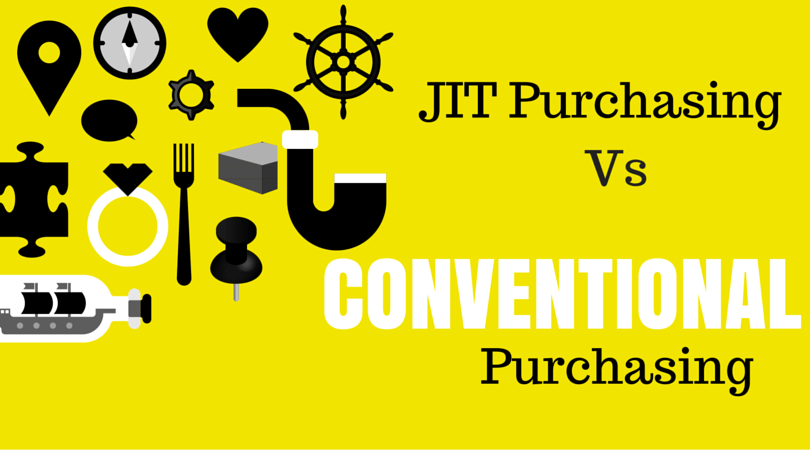JIT Purchasing different from Conventional Purchasing?
Most of us have worked in both some sort of JIT purchasing (Just In Time purchasing) and conventional manufacturing business. However, in the lean environment, the supply chain process should be capable of supporting Just in Time manufacturing. Manufacturers and suppliers have to adopt an appropriate method of supply acquisition to have availability of right material at right time at right price and in right quality. The Table by Abraham et. al. (1990) shows some of the differences between Just in Time purchasing and conventional purchasing you might be interested to read.
Get 5S – Kaizen Guide to Organize the Workplace for Flow

Here are 3 reasons why ‘Just in Time (JIT) purchasing’ is different from ‘conventional purchasing’:
Small Lot Sizes
What I have noticed is parts purchased in small lot sizes is one factor for improving product quality. The smaller the lot size the easier it is to inspect and uncover defects and the earlier the detection of defects.
Small Number of Suppliers
The second important criterion is the number of suppliers. Ideally dealing with a smaller number of suppliers has many advantages, as discussed in earlier sections, but in terms of purchasing the benefits are:
- long term relationship;
- Buyers can work closely with suppliers and ask them to participate fully in JIT purchasing.
- Consistent quality; it is easier to involve suppliers in the early stage so for Design
- Saving of resources; money can be concentrated on selecting, developing and monitoring one or few qualified sources.
- Lower costs; the overall volume of items purchased is higher, which eventually leads to lower cost.
- Special attention; inclined to pay special attention to buyers, since the buyers represents large accounts
- Saving on tooling; the amount spent on supplier tooling is minimal.
High Performance Standard
The next important criteria in JIT purchasing, is a formal suppliers election and evaluation program. However the main issue is for the selected suppliers to be able to support JIT purchasing. Not every supplier can be developed into JIT Supplier. Supplier’s delivery performance, product design specification paper work, bidding and packaging should be evaluated regularly with
Phases of implementing JIT purchasing
The key phases for implementing the JIT purchasing are as follows:
- Commitment;
- Top management in both the manufacturer and supplier
- Companies must gain commitment from employees to award just in time purchasing.
- Changing the system; a purchasing department must focus on changing the sourcing, pricing and procurement methods to a JIT purchasing system. Relationships with suppliers must be improved to enable a JIT purchasing procedure to be installed.
- Selection of suppliers; JIT manufacturers must select suppliers who can support JIT operation and who are willing to commit to a JIT purchasing system.
- Building relationships; once a JIT purchasing department s established it requires continuous effort to improve the relationship which will promote better efficiency in the purchasing operation.
- JIT purchasing implementation will not be successful lf inbound freight scheduling is not reliable and is left to the transportation system.
- The purchasing department will have to ensure that the transportation system is efficient and reliable ably taking responsibility of other alternatives to allow suppliers to take on that responsibility.
What are the other aspects which differentiate between JIT Purchasing and Conventional Purchasing, please do let me know.
About the Author- Dr Muddassir Ahmed
Dr MuddassirAhmed is the Founder & CEO of SCMDOJO. He is a global speaker, vlogger and supply chain industry expert with 17 years of experience in the Manufacturing Industry in the UK, Europe, the Middle East and South East Asia in various Supply Chain leadership roles. Dr. Muddassir has received a PhD in Management Science from Lancaster University Management School. Muddassir is a Six Sigma black belt and founded the leading supply chain platform SCMDOJO to enable supply chain professionals and teams to thrive by providing best-in-class knowledge content, tools and access to experts.
You can follow him on LinkedIn, Facebook, Twitter or Instagram






